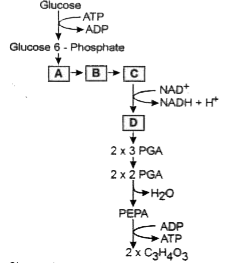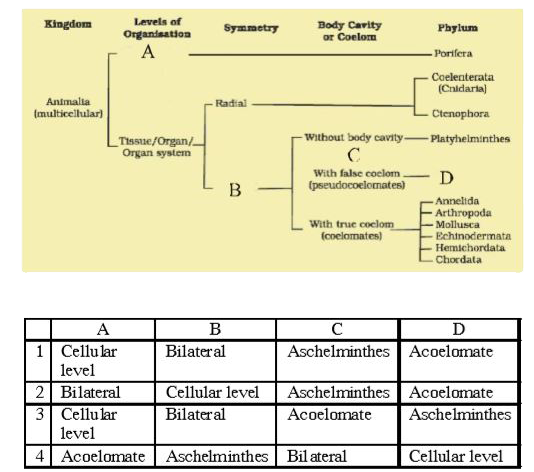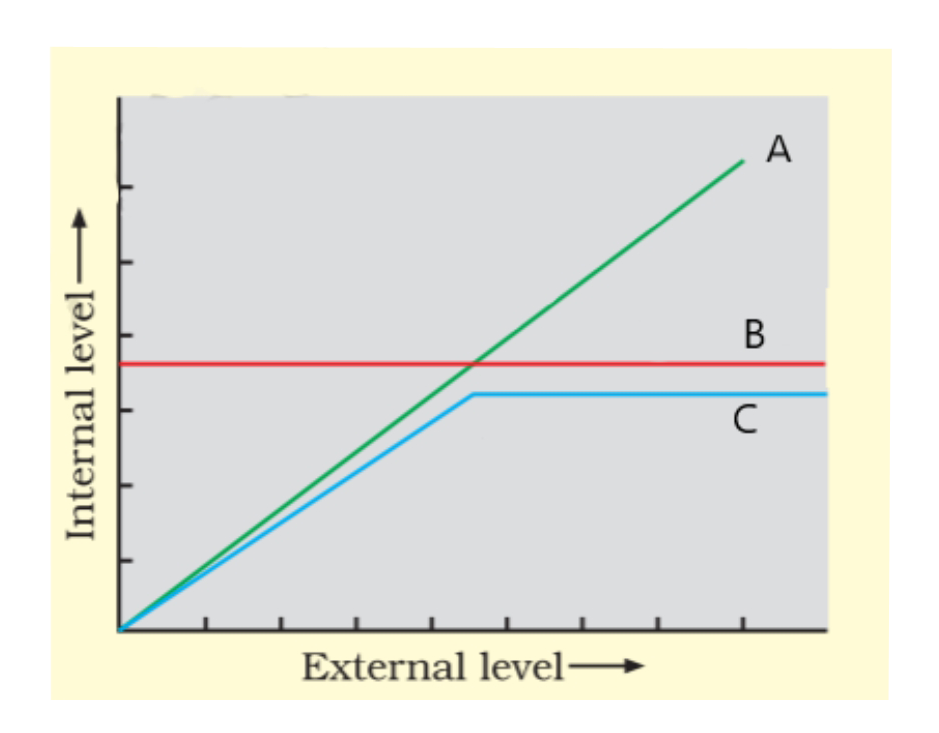A population growting in a habitat with …….A……. Resource show initially a …….B……..phase, followed by an asymptote , when the population density reaches the ………C…….
Choose the correct optioin for A,B and C
A-limited, B-lar,phase,C-carrying capacity
A-limited B-statonary phase,C-carrying capacity
A-unlimted ,B-lar phase,Carrying capacity
A-unlimted , B-log phase, C-carrying capacity
The correct Answer is:A
To solve the question, we need to fill in the blanks A, B, and C based on the concepts of population growth, particularly the logistic growth model. Here’s the step-by-step solution:
Step 1: Identify the type of resources in the habitat
In the context of population growth, we need to consider the availability of resources. The question states that the population is growing in a habitat with limited resources. Therefore, we fill in:
- A = Limited
Step 2: Determine the initial phase of population growth
In logistic growth, the initial phase is characterized by a slow increase in population as individuals adapt to their environment. This phase is known as the lag phase. Therefore, we fill in:
- B = Lag
Step 3: Identify the population density threshold
As the population grows, it will eventually reach a point where the environment can no longer support further growth due to limited resources. This point is referred to as the carrying capacity of the habitat. Therefore, we fill in:
- C = Carrying Capacity
Final Answer
So, the completed statement is:
A population growing in a habitat with limited resources shows initially a lag phase, followed by an asymptote, when the population density reaches the carrying capacity.
In the context of population growth, we need to consider the availability of resources. The question states that the population is growing in a habitat with limited resources. Therefore, we fill in:
- A = Limited
In logistic growth, the initial phase is characterized by a slow increase in population as individuals adapt to their environment. This phase is known as the lag phase. Therefore, we fill in:
- B = Lag
As the population grows, it will eventually reach a point where the environment can no longer support further growth due to limited resources. This point is referred to as the carrying capacity of the habitat. Therefore, we fill in:
- C = Carrying Capacity
So, the completed statement is:
A population growing in a habitat with limited resources shows initially a lag phase, followed by an asymptote, when the population density reaches the carrying capacity.
Similar Questions

Choose the correct names of A, B, C and D.
 View Solution
View SolutionAssertion : A population growing in a habitat with limited resources shows initially a lag phase, followed by phase of accelerated and deceleration and finally as asymptote, when the population density reaches the carrying capacity.
Reason : In Verhulst-Pearl Logistic growth, plot of N (population density) at time (t) results in a sigmoid curve.View Solution
Knowledge Check
- Question 1 - Select One
A population growing in a habitat with limited resources shows four phases of growth in the following sequence:
AAcceleration-deceleration-lag phase-asymptoteBAsymptote-acceleration-deceleration-lag phaseCLag phase- acceleration-deceleration-asymptoteDAcceleration-lag phase-deceleration-asymptote - Question 2 - Select One
A population growing in a habitat with limited resources shows four phases of growth in the following sequence -
AAcceleration - Deceleration - Lag phase AsymptoteBAsymptote - Acceleration - Deceleration - Lag phaseCLag phase - Acceleration - Deceleration - AsymptoteDAcceleration - Lag phase - Deceleration - Asymptote - Question 3 - Select One
If a population grows in a habitat with limited resources , then following phases of achievement observed
ALag → Acceleration → Deceleration → AsymptoteBLog → Deceleration → Acceleration → AsymptoticCLog → Acceleration → Deceleration → AsymptoticDLag → Acceleration → Asymptotic → Deceleration
Complete the following chart by choosing correct option for A , B ,C and D
 View Solution
View SolutionIdentify A , B and C in the image and choose the correct statement.
 View Solution
View SolutionPopulation size more technically called ………..A……..(designated as N ) need not necessarlity to be measured in …….B……..only
Choose the correct option for A and BView SolutionDesert lizards lack the …….A…….ability that mammals have to deal with the ……..B……temperatures of their habitat , but manage to keep their body temperature fairly constant by ………C……..means
Choose the correction for A,B and CView SolutionUnder normal condition …….A……..and ………B……..are the most important factors influencing population density ……….C……..and ……..D……. Assuming importance only under special condition
Choose the correct option for A,B ,C and DView Solution

